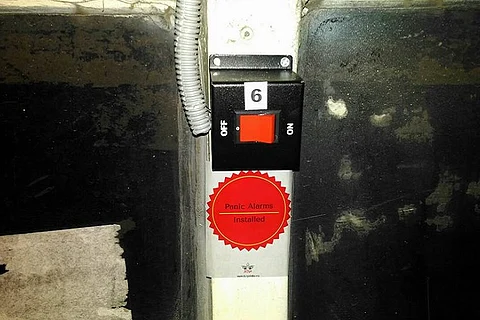

In a bid to make public transportation safer for women, an MOU has been signed by BMTC and Durga, a citizen organisation to install panic buttons or Durga alarms in buses.
“Women have been victims of physical harassment and other dangers in public transport. So we wanted to equip them with a measure to tackle these issues” said Priya Varadarajan, founder of Durga.
How does the alarm work?
Four panic button are placed on either side of the bus, where the seats reserved for women are located. The buttons positioned on the panel between the windows are at a height that is easily accessible to women, while children can stand and reach out to them. There is a pictorial representation to describe the functioning of the alarm along with instructions in Kannada. Users can alert the driver and other passengers by pressing the alarm. As per the protocol, the driver is required to the stop the bus and intervene. If the driver is unable to resolve the matter, higher BMTC officers need to be called.
In 2015, Durga installed panic buttons in 5 buses as a pilot project. The alarms were a rudimentary version of the ones that have been installed since then. “So far we haven’t encountered any major incident that the driver wasn’t able to resolve. Most issues are settled by the passengers by making the perpetrators vacate the bus,” said Priya.
The Durga team regularly interacts with the drivers to inquire about situations when the alarm is used. Drivers and commuters are also sensitised about the usage of the alarm through programmes carried out by Durga. “To create awareness about women’s safety in public transport, we take the buses to public areas such as metro stations and colleges, and inform people about the provision of the alarm,” Priya added.
Currently, the alarms are fitted in 150 buses that ply from 10 depots and have a higher population of women passengers. When the button is pressed, it creates a loud sound and a hooter placed on the roof of the bus begins to flash. “The idea is to not only alert the passengers but even the bystanders outside the bus so that they know that something is amiss,” said a BMTC officer closely working with Durga.

Image credit: Durga India
While the initial prototype of the alarm was designed by the students of MS Ramaiah Institute of Technology, the alarm is manufactured by Swelecces, a Bengaluru-based firm. However, Durga has been setting up these alarms in BMTC buses on a free of cost basis.
“We are not receiving any funds from the government for this initiative,” Priya confirmed. Durga is in talks with the BMTC to incorporate features of women safety in their app. “We want to use the app as a platform to create awareness. Also, commuters should be able to find buses with the alarm in their area and its timings. We are yet to convince the BMTC on this,” Priya said.
Though the BMTC has installed CCTV as a safety measure, it is not enough, said Priya. “If someone puts their hands inside my clothes, it won’t be seen in a CCTV recording. And by the time the authorities reach the bus, the culprit would have escaped,” she added. Thus the panic alarms are a more viable option for instant redressal of problems confronting women such as physical and sexual harassment and theft. However, the BMTC is yet to fix alarms on all buses.
Sumalatha Rao, a regular BMTC commuter said that she has seen the alarm above the seats but has thankfully never been in a situation when she needed to use it.
“But if faced with danger, I will be mindful of the alarm,” she said. In the coming months, with the support of Sowmya Reddy, the Jayanagar MLA, Durga will be installing panic buttons in 100 buses that ply out of Jayanagar.